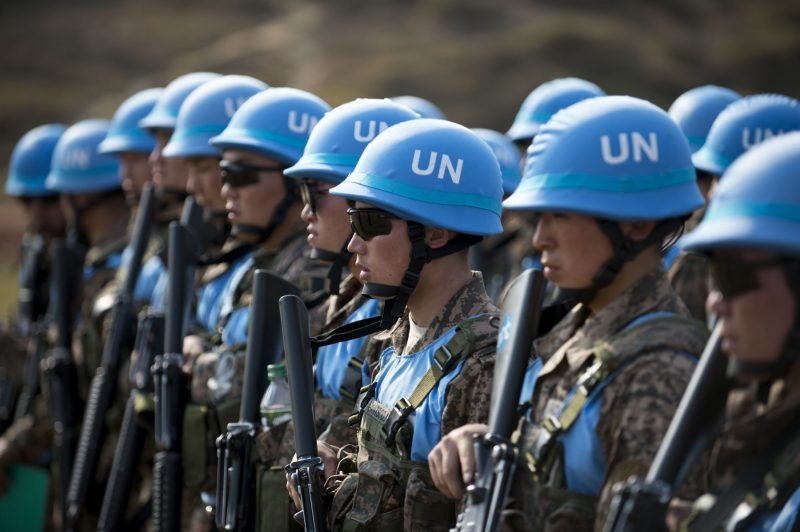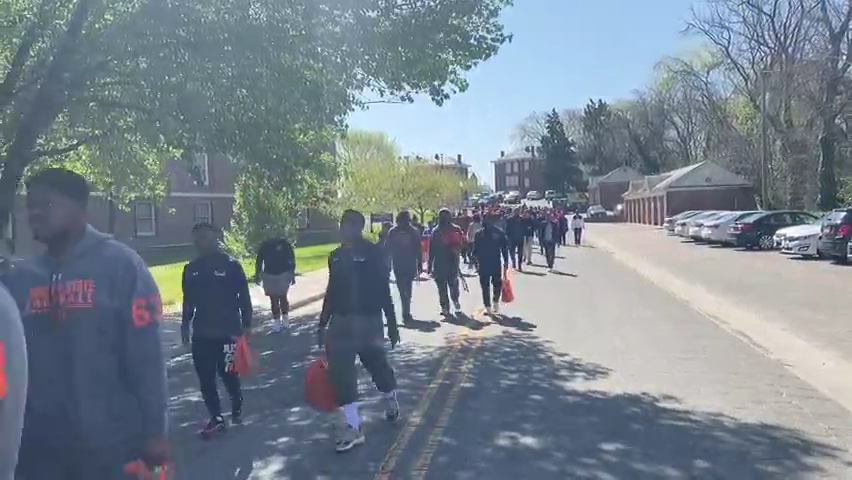Can UN Peacekeepers Really Stop World Conflict?
Can UN Peacekeepers Really Stop World Conflict? In a world fraught with ideological rifts, geopolitical rivalries, and explosive territorial disputes, the vision of a globe united in peace seems increasingly elusive. Yet, amid the cacophony of warfare, rebellion, and civil unrest, a familiar blue presence persists—an emblem of hope draped in a flak jacket and a powder-blue helmet. These are the UN peacekeepers, guardians of fragile truces, symbols of global consensus, and frontline witnesses to humanity’s most volatile chapters.
But the question remains—can they truly halt the machinery of war? Can UN peacekeeping missions genuinely deliver on their promise to foster enduring peace?
Let’s take a deep, honest, and thought-provoking journey into the reality of UN peacekeeping missions—their victories, their failures, and the uncertain terrain they navigate every single day.

A Brief Look Back: The Origins of Peacekeeping
Born in the crucible of post-World War II idealism, the United Nations was chartered in 1945 to “save succeeding generations from the scourge of war.” However, the concept of UN peacekeeping missions didn’t emerge until 1948, when the UN Truce Supervision Organization (UNTSO) was deployed to monitor ceasefires in the Middle East.
Since then, more than 70 peacekeeping operations have unfolded across the globe. Some preserved fragile peace with quiet dignity; others were overwhelmed by the storms of chaos and bloodshed.
Despite the aura of neutrality, UN peacekeeping missions are not passive observers. They are tasked with conflict prevention, civilian protection, electoral support, disarmament, reintegration of combatants, and even constitutional reform. Their mandates are as diverse as they are ambitious.
What Makes a Peacekeeping Mission Work?
Peacekeeping isn’t about brute force. It’s about diplomacy wielded with patience, presence without provocation, and political neutrality sustained under pressure. For a UN peacekeeping mission to be successful, several vital ingredients must align:
1. Consent of the Parties
Without the explicit consent of the warring factions, peacekeepers often operate in quicksand. Consent grants legitimacy; its absence begets hostility.
2. Clear Mandate
A well-defined mission with attainable objectives is more likely to produce tangible results. Vague or overambitious mandates often doom missions to ambiguity and inefficacy.
3. Impartiality
Maintaining neutrality, even when one side clearly violates peace terms, is a hallmark of UN peacekeeping missions. It’s also a tightrope walk, requiring incredible political finesse.
4. Adequate Resources
Too often, peacekeepers arrive with insufficient personnel, outdated equipment, and minimal funding. A mission without teeth cannot bite back when violence escalates.
5. Political Will
The support of the UN Security Council is critical. Without political unity among major powers, missions can flounder amidst inaction and bureaucratic inertia.
Success Stories: When Peacekeeping Worked
Namibia (1989–1990)
The UN Transition Assistance Group (UNTAG) oversaw the transition of Namibia from South African occupation to independence. This mission exemplified textbook peacekeeping: strong mandate, solid resources, and international support.
Liberia (2003–2018)
The UN Mission in Liberia (UNMIL) helped the war-torn nation move from two brutal civil wars to democratic elections and institutional rebuilding. Over 15 years, peacekeepers disarmed rebels, trained police, and helped rewrite national law.
Cambodia (1991–1993)
After decades of conflict, the United Nations Transitional Authority in Cambodia (UNTAC) managed one of the most comprehensive state-building efforts in UN history. The mission helped conduct free elections and demobilized warring factions, offering a template—albeit imperfect—for future efforts.
These operations illustrate the potential power of UN peacekeeping missions when conditions are favorable. Yet, such harmony is rare in the realpolitik of global conflict.
Bitter Lessons: When Peacekeeping Failed
Rwanda (1994)
Perhaps the darkest hour in peacekeeping history. The UN Assistance Mission for Rwanda (UNAMIR) stood paralyzed as genocide unfolded around them. Under-resourced, under-mandated, and stripped of reinforcements, UN troops could do little as 800,000 people were slaughtered in just 100 days.
Bosnia (1992–1995)
The massacre of 8,000 Bosniak men and boys in Srebrenica occurred in a “UN safe zone.” The Dutch peacekeepers, overwhelmed and unsupported, were unable to prevent the bloodshed. This event remains a haunting indictment of peacekeeping’s limitations.
Somalia (1993–1995)
Mission creep, inter-clan warfare, and the infamous “Black Hawk Down” incident led to an abrupt withdrawal of UN forces. Rather than restoring order, the mission inadvertently escalated tensions.
These sobering chapters reveal the vulnerability of UN peacekeeping missions when trust erodes, resources dry up, and mandates are ignored or politically undermined.
Modern Challenges in a Fractured World
Today’s conflicts are no longer neatly packaged wars between nation-states. They are often complex entanglements of insurgents, criminal syndicates, terrorist groups, and fragile governments. In this chaotic theater, the challenges facing UN peacekeeping missions are manifold.
Asymmetrical Warfare
Peacekeepers are trained to observe, not engage. But modern conflict often involves non-state actors with no intention of negotiating, making peacekeeping tactics outdated or irrelevant.
Cyber Threats and Disinformation
Social media and cyber warfare complicate peace efforts, spreading propaganda, inciting hatred, and undermining UN credibility in real-time.
Rising Nationalism
Many nations are less inclined to contribute troops or funding to international efforts. As nationalism rises, multilateral cooperation—essential to peacekeeping—becomes more difficult to sustain.
Climate-Induced Conflict
Water scarcity, desertification, and food insecurity are driving new forms of conflict. Peacekeeping operations must now contend with environmental triggers that defy conventional resolution.
Peacekeeping Reinvented: New Models for a New Era
To adapt, the United Nations is gradually rethinking how UN peacekeeping missions function. Here are some forward-looking innovations:
1. Technology-Driven Peacekeeping
Drones, satellite surveillance, and AI are being deployed to improve situational awareness, monitor ceasefires, and gather intelligence without putting troops in harm’s way.
2. Gender Inclusion
Increased participation of female peacekeepers is helping build trust with local communities and address gender-based violence—a growing concern in conflict zones.
3. Localized Peacebuilding
Rather than imposing top-down solutions, modern peacekeeping emphasizes empowering local leaders, religious figures, and community organizations to foster indigenous, sustainable peace.
4. Hybrid Missions
Joint operations with regional organizations like the African Union or European Union are becoming more common. These partnerships combine global legitimacy with local knowledge and flexibility.
Do Peacekeepers Really Prevent War?
The data is encouraging. Studies show that when deployed correctly, UN peacekeeping missions reduce the risk of conflict reigniting by 50 to 70 percent. Countries with peacekeeping support are more likely to experience stable political transitions, especially when missions are sustained over the long term.
Moreover, peacekeeping is surprisingly cost-effective.
So, while peacekeepers may not “stop” war in the Hollywood sense—charging in with guns blazing—they help stop something arguably more insidious: the normalization of violence.
What the Future Holds
The role of UN peacekeeping missions is at a crossroads. To remain effective, they must:
- Secure stronger political mandates from member states.
- Embrace technological agility and cybersecurity.
- Prioritize preventive diplomacy.
- Tackle root causes like poverty, inequality, and climate instability.
There’s also growing recognition that peacekeeping alone cannot suffice. It must be part of a broader strategy—integrating humanitarian aid, economic development, transitional justice, and governance reform.
Final Thoughts: The Blue Helmets and the Burden of Hope
The mission of the UN peacekeeper is daunting, often thankless, and occasionally tragic.
Can UN peacekeeping missions stop world conflict entirely? Probably not.
But they can mitigate, delay, contain, and transform conflict. And in a world teetering on the edge of chaos, even that is profoundly significant.
Every ceasefire monitored, every child protected, every village stabilized—these are not just symbolic victories. They are real, measurable steps toward a less violent world.
And sometimes, the first step to global peace is simply someone willing to stand in the middle, wearing a blue helmet, and saying: “This far. No further.”








